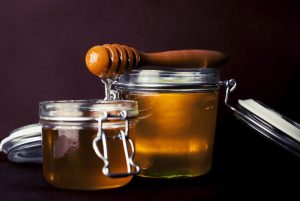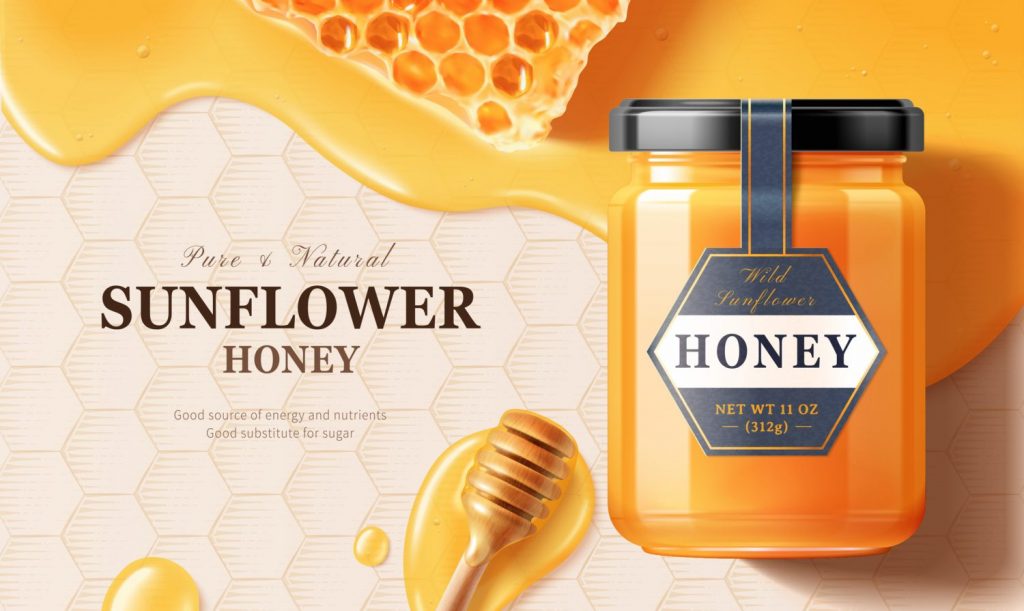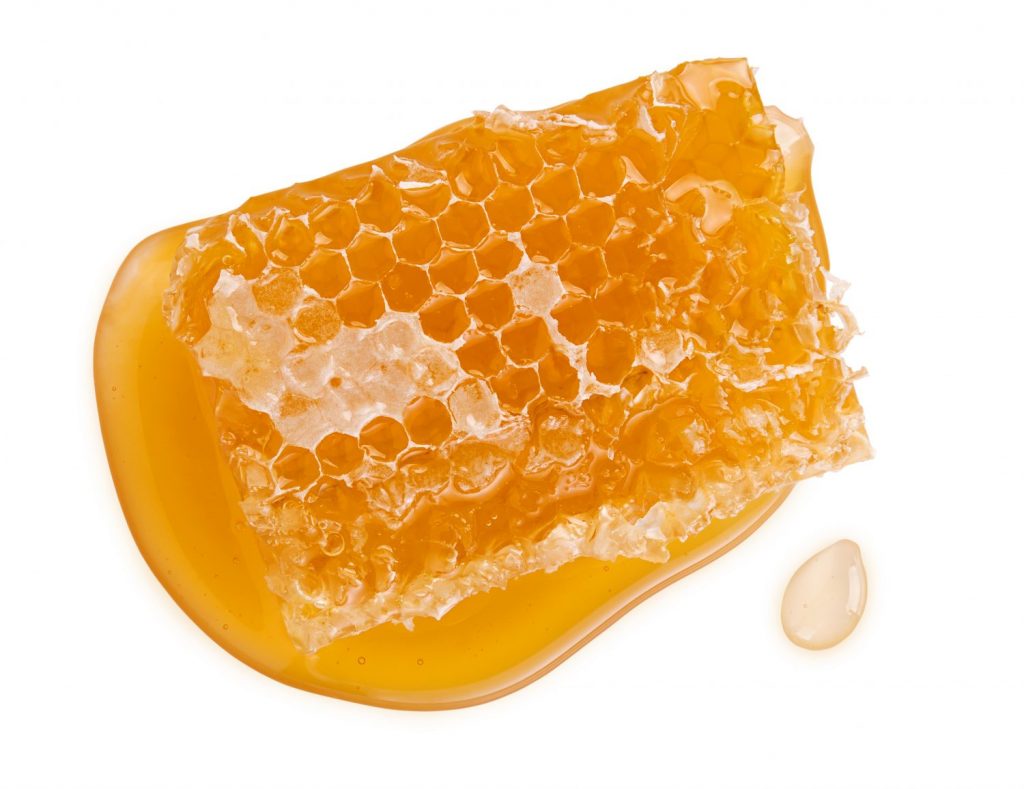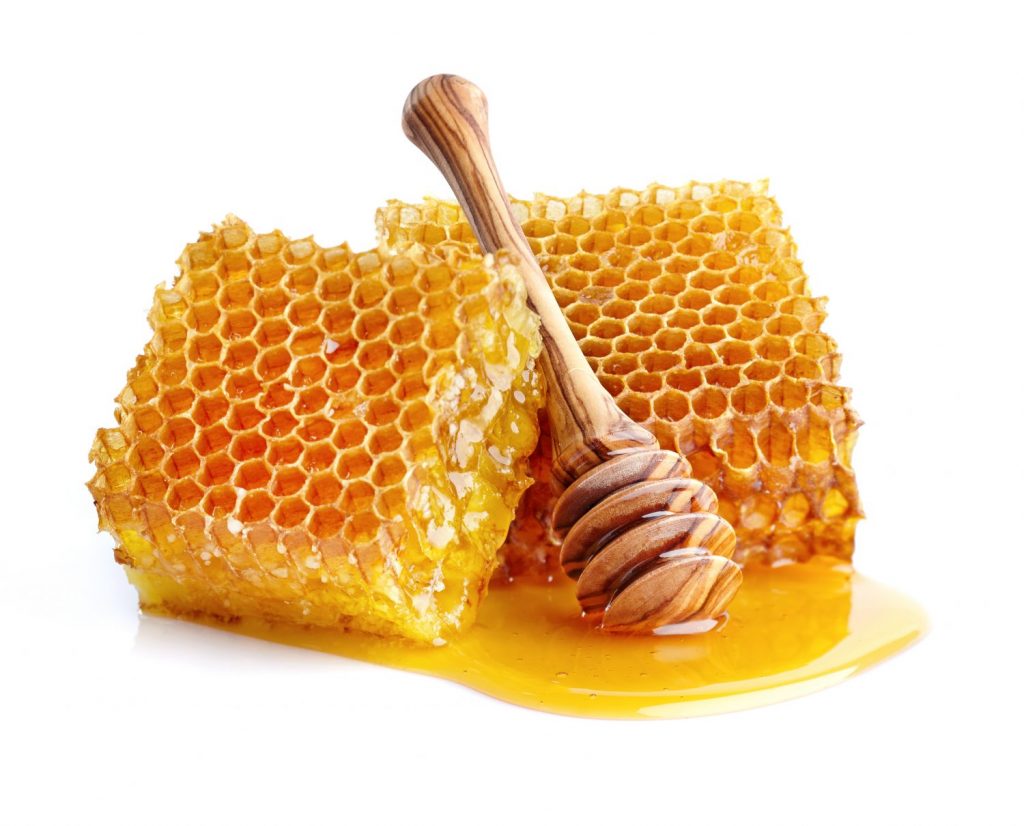If you purchase an independently reviewed item through our site, we earn an affiliate commission. Read our affiliate disclosure.
Honey is the only product that can be best described as transcending our human existence. It is believed that humans have kept bees for more than 9000 years with artifacts dating back to the Stone Age evidencing this. Some of the benefits associated with honey include its medicinal value. It helps solve indigestion problems heals wounds, is rich with beneficial sugars, boasts antifungal and antibacterial properties, and is one of the best sources of antioxidants. It is widely used across so many industries and it thus markets itself. If you have been thinking of buying and selling honey, then you just landed in the right place. You may also be a beekeeper producing honey and need some insights on how to market your product. This article will address all the concerns of anyone desiring to buy and sell honey.
Honey is an easy product to buy and sell, unlike other products such as insurance, a car, electronics, or any other product you can think of. It also has the ability to stay fresh infinitely, once its properly stored. What this means is that you are not constrained by the shelf life of honey. The global demand for honey also surpasses its supply by far.
Selling Honey
There are several steps to consider before selling honey. These are harvesting, bottling, labelling and storing.
1. Honey Harvesting
Honey harvesting is where it all begins. You can sell the honey as comb honey, in which case it refers to the honeycombs cut into tiny pieces to make packaging easier. The buyer or consumer has to extract pure honey from the comb. To some beekeepers, this makes selling honey pretty easy, especially for those lacking honey extractors or anyone with top bar beehives. It however has its share of setbacks. First off, you lose the honeycombs that can be reused. Secondly, the market price is much less when compared to extracted honey. Finally, the honey bee colony is forced to work much harder in replacing the lost honeycombs.
A good way and sustainable choice is the use of the honey extractor. This helps in removing honey from combs and with the least damage. A common practice among honey sellers is to place a little honeycomb inside the honey jar so as to differentiate their honey from that of competitors.
There is also beeswax that can be harvested during honey extraction. This can generate some income as well. It is however advisable to adhere to local safety or health practices while harvesting your honey. Be keen to find out the regulations that apply to your area. In most states, one may risk being banned or arrested for selling impure or contaminated honey. It thus goes without saying that you need to practice top-notch safety and health measures for harvesting and selling honey.
2. Bottling Honey
This follows honey harvesting. Pure-harvested honey should be kept in the right container prior to marketing. This will not only appeal to the eye of your buyers but it also helps keep the honey safe and free from contamination. You can choose between plastic and glass when bottling. Each of these options has its pros and cons.
Glass bottling
Pros
- The glass looks classy and highly sophisticated. It also looks expensive and highly appealing.
- An excellent option for marketing honey. It clearly demonstrates the beauty of honey and is simply irresistible. Clear glass in particular is the best choice for marketing honey.
- If safety is your concern then the glass is food safe and will never dissipate chemicals that contaminate honey.
- It is recyclable. It is also easier to clean glass when washed with warm water. You can also request your buyers to bring back used jars for refilling.
Cons
- Not ideal for shipping across borders since glass breaks easily.
Plastic Bottling
Pros
- This is best suited for exporting honey since it does not break the glass.
- It is highly durable.
- It is lightweight and will make perfect sense if you handle dozens of containers.
- Food-safe plastics are best suited for storage.
Cons
- Plastics cannot be reused since it absorbs flavors and odors.
- It may be food safe with some exceptions. You need to check out the type of material used.
3. Labelling Honey
Bottled honey needs to be labeled and there are set standards for labeling honey as set by the Food and Drug Administration (FDA) or your local authority.
Labeling is essential when selling honey and this cannot be emphasized enough. The main advantages of honey labeling include:
- It is an FDA requirement that honey is properly labeled. This means it should include some aspects such as the name of the food, the net weight of the product, and contact information. In the case of honey, the label should be “Honey”, if it is pure and without additives such as syrup. The net weight refers to the weight of the product minus the storage container. This should be placed at the bottom of the label. Contact information includes the name of your business, your address, telephone numbers and website.
- Labels are appealing to the eye and will certainly grab the attention of potential buyers. It is widely used by honey marketers since it works.
- You need labeling as a matter of convenience and transmission of information to buyers. This makes it easy for buyers to know what they are buying. Labels show helpful information such as ingredients within the product. It also gives instructions and the best uses of a product.
- Identification is the other purpose for labeling. This makes your honey easily differentiable from that of your competitors.
4. Storing Honey
Honey should be kept in a cool place free from direct sunlight. The storage container should also be tightly sealed. Food-safe plastic and glass jars are preferred storage containers. The best property that makes honey one of the easiest to store is its property of never expiring. Honey may crystallize but that does not affect its nutritional properties or value. It can also be reversed when crystallized.
Refrigeration is not required during honey storage. Too low temperatures make honey solidify which is not necessary. You will be forced to warm it up when you need to use it. As a general rule, keep your honey away from heat and moisture. Honey is also best kept at room temperature. During hot months or in areas where a room gets too hot, it is recommended that you choose the coolest spot in the house for the storage of honey. Heat-producing appliances such as stoves and others should also be away from the honey.
Avoid introducing moisture to the stored honey. This means the use of a dry spoon if you need to dip it into the storage container or honey jar. Moisture makes the stored honey ferment and will lower the quality of the honey.
In terms of shelf life, honey has the longest shelf life when compared to any other product. This property can be attributed to the fact that honey has a high concentration of sugars. It is the best source of natural sugars boasting an infinite shelf life if properly stored.
The key determinants of the shelf life of honey include: how it is manufactured and stored. Raw honey can stay in good condition for centuries. This may however not happen with pasteurized honey. It is however worth noting that honey loses some of its properties with time. This includes its flavor and aroma. It may even become dark or begin to crystallize. These changes do not affect its nutritional properties.
How to Sell Honey Correctly
As earlier mentioned, good quality honey will sell itself but this does not mean you package your honey, keep it at home and wait for buyers to sniff and show up. You have a lot to do in terms of reaching out to your potential buyers. In the age of technology, it is quite easy to reach out to your buyers. Various platforms make it so much easier for any beekeeper or honey seller to get customers.
In order to sell your honey correctly, follow these simple nuggets:
1. Honey Quality
It does not matter whether you are a buyer intending to sell honey or a beekeeper producing honey for commercial purposes, honey quality is paramount. As a beekeeper, ensure you produce the best quality honey, otherwise, it may not be easy to get potential buyers for your product. Conduct your research on the various beekeeping practices that make it inevitable for your bees to produce the best quality, honey. As for the buyer, do your research on the various sellers within your region and ensure you get the best quality honey for sale.
2. Target Market
This is an important consideration whether you produce the honey yourself or buy from others. The target market will affect your budget. As the buyer, the target market dictates how much you need to spend in buying the honey for sale. Conversely, the producer has to consider the target market so as to produce what will meet its need. Honey demand is quite huge the world over, with supply dwarfed by this huge demand. This thus means you need to have in mind your target market from the start.
3. Labelling
Once you have identified your target customers, it is time to label your product. Improve the appearance and salability of your product by picking an attractive label. You can use your own custom label or get one from your local beekeeping supplier. An ideal label should contain key information such as the word ‘HONEY’, the name of the business and address, the net weight per package, the type of honey, and the nutritional value.
4. Market your Honey
Honey being a pure and natural food will easily attract the attention of buyers. You can begin by approaching independent food markets in your neighborhood. Check out health food stores as well, since most of them continuously seek sources of fresh local honey. Other areas worth considering include boutiques, gift stores and even craft shops. These are ideal places for selling locally produced honey.
A great way of marketing your honey is by also placing a billboard next to your home/business with the words “HONEY FOR SALE”. This would certainly get the attention of potential buyers within your locality. You may also visit a local farmers market and put up a stand for your packaged honey. Other exciting places to reach out to honey buyers include church fairs, gardening centers, or even synagogue bazaars. Do not also forget your neighbors since they can pass the message through word of mouth to potential buyers. You can give out a part of your products for free at the start and encourage them to buy from you.
The internet is also a great place for reaching out to buyers or pure locally produced honey. You can set up your own website or use existing e-commerce platforms such as eBay. If the main target market is the global market, then consider packaging your honey in plastic honey jars. These are not only lighter but also sturdier and not fragile like glass. They are best suited for shipping across borders and regions.
How to Increase the Base of Potential Future Honey Buyers
Customers are everywhere and that holds true for any business including selling honey. You can take your honey business from a smallholder subsistence producer to a huge business reaching out to millions of people across borders. Beehive products such as honey and beeswax have a huge and insatiable market. That means the right strategies can help you turn the business into a profitable enterprise. Some of the ways to turn around your business and increase the base of potential honey buyers include the following:
1. Capitalize on Packaging
The right package makes a lot of difference in the honey business. Several honey bottles or jars arranged next to others in a store in most cases look like to a buyer. The main differentiator will be the right label. The use of logos, bottle decorating, and labeling will ensure you easily attract potential buyers. There are literally thousands of labels to check out and adopt. You can DIY or employ a professional in designing the perfect label for your honey jars and bottles. Ensure the plastic and glass jars are well-shaped and clear enough to showcase the natural honey. Product labels should also demonstrate what is contained in natural pure honey, its uses, benefits, and your contact information.
2. Honey Fairs and Training
This is one of the best ways to guarantee a mutual benefit between your business and potential buyers. Conduct regular fairs or training sessions in your farm or backyard. Many people would be interested to learn about beekeeping and honey making. You can train on various aspects of beekeeping such as hive management, honey harvesting, extraction, and honey bottling. Some potential people to consider for your training include local groups, scout troops, local schools, colleges, or even university clubs. You may as well attend agricultural fairs within your locality and offer training as well while selling your products.
3. Product Diversification
Selling honey is a thriving business by itself no matter the locality. However, you should devise ways of making extra income from your business besides selling honey. Beeswax, pollen, and royal jelly are products that do sell and these should be included in your stock of honey jars and bottles. You can include lotions, candles, lip balms, and many other products as a part of your inventory. These products are easy to make and you can learn.
4. Digitize your Business
In this age of technology do not stay behind. Take advantage of digital platforms for marketing. You can promote your product online through platforms such as social media, Craigslist, or even eBay. It will surprise you to learn that most of these platforms are free or cost so low to use. Adopt a consistent way of marketing your product and you will certainly gain a broader customer base for your products. You can also build your own website and offer helpful resources to your followers.
5. Free Samples and Giveaways
Who doesn’t love free things? No wonder hordes show up when they hear about free samples and giveaways. Take advantage of this and offer some free samples to potential buyers during trade fairs, markets, and festivals. Be on the lookout for these events and sign up to participate. Set up your table and fill it with some of your inventory. You should also design a business card and carry some to these events. Give these to anyone willing to pick them up during these events. You may also set up a road stand near an area with heavy traffic or next to your home. Give away free samples and encourage your customers to pass the word about your product.
How to Resist Cheap and Low-quality Honey
It is apparent that honey quality differs based on the type of flowers foraged by bees. There is however no clear way to describe what a good quality honey looks like based on the ingredients therein. Fortunately, some criteria are used in the laboratory when determining honey quality. Various factors come into play when evaluating the quality of honey. The knowledge of what constitutes good quality honey can help you resist cheap and low-quality honey.
1. Color
Honey is available in various color options comprising light, dark, and amber. These ideally have no effect on quality but it alludes to the kind of plants foraged by the bees and also suggests the region the honey has come from. Basswood honey tends to be very light, and tulip poplar honey is much darker. Darker honey tends to be richer in mineral content, aroma level, and also pH rating. It is rich in minerals such as sodium, sulfur, potassium, magnesium, chlorine, and iron.
2. Water Content
Honey quality is hugely affected by its water content. Good quality honey is free from excessive moisture and can stay fresh without fermenting for ages. Honey is hygroscopic by nature meaning it easily absorbs moisture from its surroundings. The most valuable honey has a moisture content of about 14% and this can be measured using a refractometer. To keep honey in good quality for ages, a cool dry place is required and should be free from direct sunlight.
3. Testing
You can find out if honey is pure or not by conducting various tests: flame test, water test, and thumb test. Pure honey is inflammable and caution should be exercised when conducting a flame test. Strike a match stick soaked in honey if it lights then the honey is pure and if it does not then the honey is adulterated. The water test involves placing a spoonful of honey inside a glass filled with water. Pure honey will settle at the bottom in lumps. Adulterated honey dissolves in the water. As for the thumb test, place small amounts of honey on your thumb and watch what happens. Pure honey will stick to your thumb, whereas impure honey spreads or overflows.
You can also use vinegar for testing honey. Two to three drops of vinegar mixed with some water and a tablespoon of honey is all you need. If the mixture results in foam then there is a greater possibility the honey is adulterated.
Conclusion
In the current generation when almost anyone is seeking anything grown organically, honey certainly sells itself. It is naturally developed and the beekeeper is ideally in control of what goes into it. One of the ways to guarantee pure and unadulterated honey is by raising bees in a setting free from chemicals. Beehives can be well positioned to prevent bees from foraging on flowers grown through the use of chemicals. The production of pure honey is attainable and once customers associate your product with quality, the product will literally fly off the shelves. Honey sells itself and its demand is insatiable. It can be branded and sold either locally or overseas.
What are your thoughts on this article? Leave a comment below and let us know.
 BeeKeepClub Resources and Guides for Beekeepers
BeeKeepClub Resources and Guides for Beekeepers








I want sell honey, I bought 2 boxes for bees. And I have registered them with department of agriculture.
Please any advice me🙏
Hello, I encourage you to go through the articles on this website to get a better understanding of beekeeping. You can start with our getting started article https://beekeepclub.com/getting-started-beekeeping/